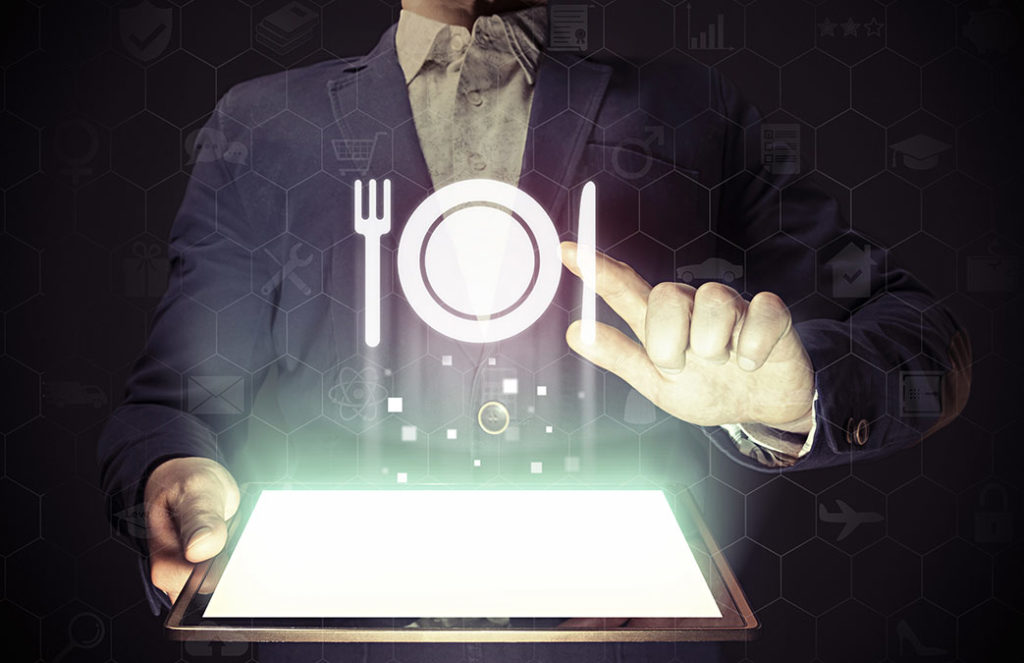From chatbots to biometrics to VR, 2018 is sure to be a fantastically creative, innovative and progressive year for Hospitality technology. But before we show you the future, let’s start with a quick look back on the past 12 months.
2017 in Hospitality technology
The Hospitality customer self-service technology movement took great strides forward in 2017 and now accounts for $1.9B of food service transactions annually. Big brands were a top driver of growth, with international chains focussing on the roll-out of digital strategies to support the needs of an ever increasing digital-first society. Examples of this are Starbucks launching a voice ordering app to complement its existing mobile order and pay application; Wendy’s installing kiosks at 1000 of its locations and McDonald’s extending its plans for mobile order and pay.
And with a plethora of new tech implementations comes lots of learnings. Panera taught us the benefit of rolling customer self-service technology incrementally, while Starbucks highlighted the importance of considering customer fulfilment and shop floor layout before implementing off-site order and pay.
Indeed, 2017 saw front-of-house spaces retrofitted across the board to accommodate customer self-service ordering systems including kiosks and mobile order and pay. The most common shop floor upgrades were listed as adding shelves for mobile orders awaiting pick-up, reducing cash register space due to increasing mobile and card payments and installing hot boxes and heat lamps.
Other notable figures from the sector include a record high of smartphone users and an increase in app time, with the average US adult spending 2 hours 25 mins per day on an app – a jump of 10.3% over 2016.
Top 5 Trends for 2018
-
Further decline in cash payments
A continuation in the decline of cash transactions is expected next year as customers of all ages reduce the amount of cash they carry, opting for digital methods of payment instead (see survey by Oracle). Hospitality operators will respond by moving towards cashless restaurant models such as those used by Shake Shack and Sweetgreen in an effort to meet customer demands and increase efficiencies.
-
Chatbots
Heuristic chatbots – both voice and text enabled – are set to take the industry by storm next year. Hospitality operators will continue to follow in Domino’s footsteps, with more brands incorporating chatbots into their guest-facing channels, with an initial focus on social media.
-
Biometrics
Biometrics will revolutionize the way we access and verify information over the next couple of years. Focussing on Hospitality tech, the big feature set to disrupt in 2018 will be the ability to verify your identity at self-checkouts and kiosks using facial recognition technology.
-
VR/AR
“Over the next decade, advances in digital reality – an amalgamation of augmented reality (AR), virtual reality (VR), mixed reality, 360s and immersive technologies – will lead to more natural and intuitive ways for technology to better out lives. Indeed, our means of interfacing with digital information will likely no longer be screens and hardware but gestures, emotions and gazes.” – (Deloitte, 2017)
Roll it back to 2018, we expect to see a higher uptake of VR and AR in high-end hotels and restaurants looking to create immersive atmospheres, advancements in eye-tracking technology within digital menus and an increase in use of VR for Hospitality staff training (see KFC’s virtual escape room).
-
Operators shift focus to innovating the in-restaurant guest experience, and not just through kiosk
After a year of delivery, 2018 will see Hospitality operators return their gaze to on premise innovation. In-store is where the majority of Hospitality sales take place and presents the greatest opportunity for increasing check value. For example, Starbucks is the market leader when it comes to mobile ordering, but still conducts 80% of its transactions at the store level.
The most popular trend when it comes to in-store innovation is the kiosk and – although effective at reducing staff costs – and boosting revenue by up to 20% – it is a pricey piece of hardware both to install and run. As such, next year we see Hospitality operators looking at new ways of utilising customer-own devices (i.e mobile) on the shop floor and at the drive-thru. Not only will this reduce hardware costs, it will provide access to customer data that has the potential to power targeted marketing activities and drive truly personalized loyalty programs.
But whether it’s kiosk, mobile or pay at table tablet, one thing is for sure; with the substantial investment and over-reliance on third parties associated with delivery, 2018 will see the focus shift to innovating the guest experience for the majority of customers who choose to dine in.





